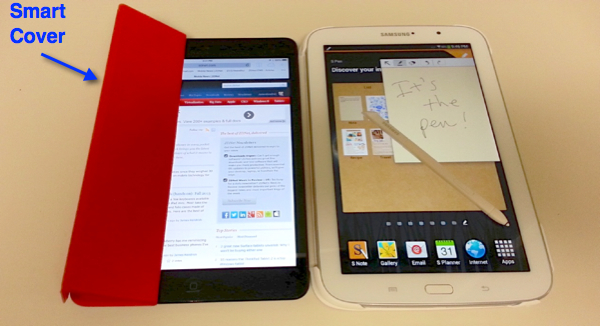Successful mobile technology: It's the little things


Gadget buyers love flashy hardware and all the bling that comes with that. That's what makes a phone or tablet stand out from the crowd to attract consumers. As important as that is to get the public to buy a device, it's often the little things under the shiny cover that make using a gadget a long-term satisfying journey.
These small features all have one thig in common, they come into play every day and often multiple times. They make using a gadget easier by doing one thing that lets the user use the device without thinking about it. These features are intuitive and keep the gadget from getting in the user's way.
The feature should be simple enough that it activates when the user does something like opening a cover, or another action that must be performed anyway.
Sometimes these features are hardware, sometimes software, and other times a combination of both. Hardware can trigger a software reaction that does something automatically that the user would otherwise have to do manually. This is a little thing but when it saves the user from a frequent, monotonous action it adds up to user satisfaction.
An obvious example of a little feature that is a big deal is the magnetic smart cover technology that appeared with the iPad and is now in most tablets. Simply opening the cover and having the tablet wake up automatically is a hugely satisfying action simply because it comes into play every time the tablet is picked up. It's the same for closing the cover and having the tablet go to sleep, thus saving battery life with no effort.
Latest review
Apple wasn't the first to use magnets to wake up a device. BlackBerry used it years ago with its phone holsters worn on the belt. I never liked belt holsters before but gladly used one with my old BlackBerry because the wake/sleep feature was so useful. Taking the phone out of the holster and having it ready to use made the user experience so satisfying.
A similar little feature that is useful is now in just about every laptop, no matter the brand or platform. Opening the lid and having the laptop wake up has become the expected function of laptops. It makes the user experience so much better that if it was missing the user would surely be jolted. Like all of the useful features mentioned in this article, it's not a huge effort to perform the action manually, rather it's letting the user get right to business every time the laptop lid is opened or closed that is satisfying.
In the tablet world a nice feature involves the pen. A ThinkPad Tablet PC I used years ago would wake up when I pulled the pen out of the storage silo. Since I used the pen heavily, this simple feature made using the tablet better than if the feature was not present.
Samsung has implemented this feature in its Galaxy phones and tablets that have a pen. They've even taken it further by adding additional functionality. When you take the pen out of the phone, it wakes it up, bypasses the lock screen, and fires up apps that take advantage of the pen. Just pulling the pen out of the storage silo presents the user with a phone ready to use the pen.
These are just a few examples of little features that yield a user experience that is more satisfying than it would be without the feature.
For a feature to be as successful as those mentioned in this article, it must be one that comes into play regularly during normal device usage. It should perform a function that lets the user get right to the task at hand. The feature should be simple enough that it activates when the user does something like opening a cover, or another action that must be performed anyway. It's not rocket science that's needed, rather something ordinary done for the user. When a feature meets this criteria and works well it can turn a good user experience into a great one.
See also: